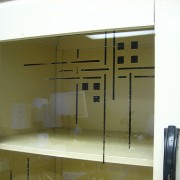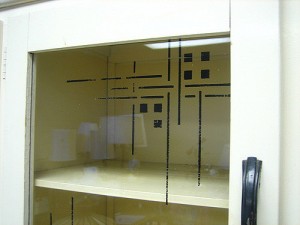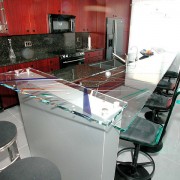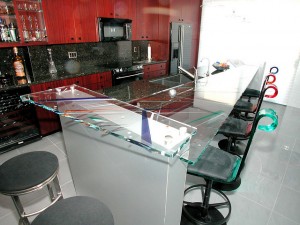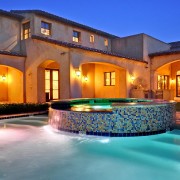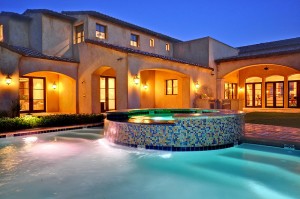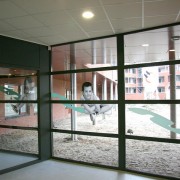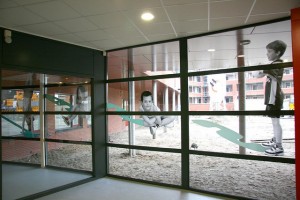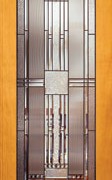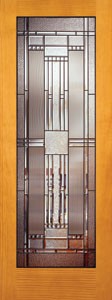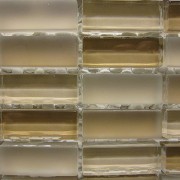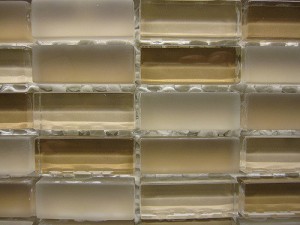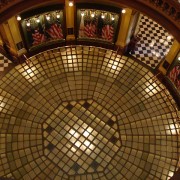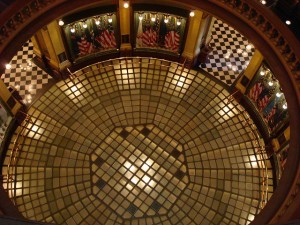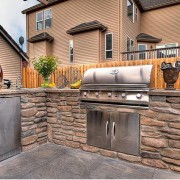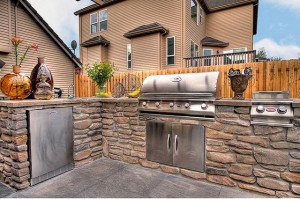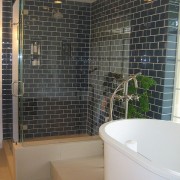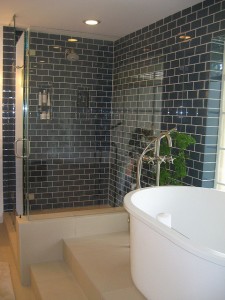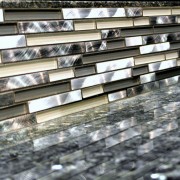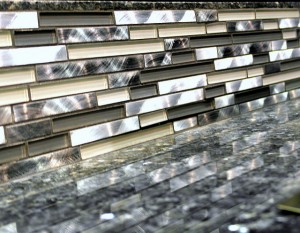Intrigued by glass cabinet fronts? Us too!
One quick, easy way to refresh kitchen cabinets is by laminating them with glass, or Plexiglas™. Glass just works well in the kitchen. It’s easy to clean, requires no special care and can add an elegant touch to a space. As an added bonus, it can open up a space – a plus for small kitchens.
You can use glass or Plexiglas™ in the kitchen to similar effect. Glass can be cut into virtually any shape and comes in whatever size you’re looking for. Plexiglas™ has the added benefit of being lightweight. If you’re working with solid cabinetry, and you just want to update the fronts, using a lightweight piece of glass to laminate the fronts may work out well.
If your cabinets are older, or not as rugged as they used to be, Plexiglas™ can give you much the same look minus the weight of glass. Both glass and Plexiglas™ bond easily using silicone adhesives, and they can be painted in virtually any color, using a paint like Glassprimer™ glass paint.
Glassprimer™ glass paint is easy to apply to precut glass or Plexiglas™, but it’s also rugged enough to stand up to cutting after the paint’s been applied! You can get exceptional coverage for about $1 per square foot, so it’s economical as well.
In addition, Glassprimer™ glass paint bonds permanently with both glass and Plexiglas™. It will not chip, fade or peel once it’s cured, which means it will stand up to whatever you’re dishing up in the kitchen!
Whether you intend to backpaint backsplashes, countertops or cabinet fronts, Glassprimer™ glass paint is your go-to decorating choice in the kitchen. If you’d like more information about decorating with Glassprimer™ glass paint, please visit the rest of our site. If you’d like to purchase Glassprimer™ glass paint, please visit our online store .
Photo Credit: Jenny Addison, via Flickr.com

